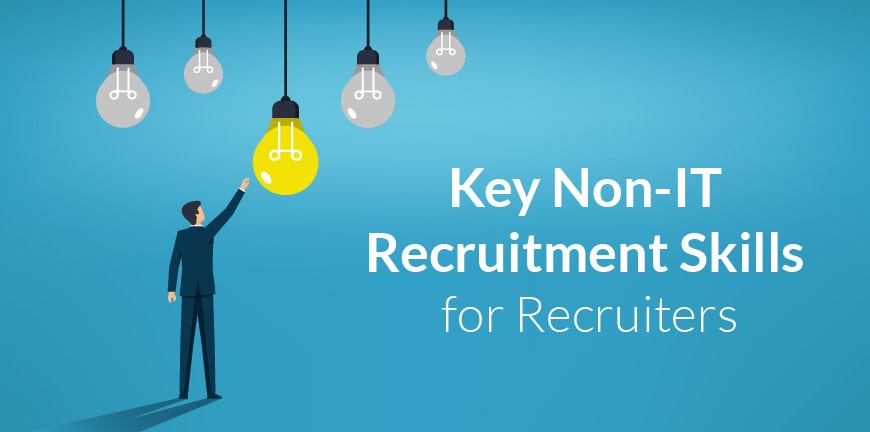
7 Latest Compliance Industry Trends 2025
02/09/2025
Fintech & BFSI Talent Needs: The Rise of Risk, Compliance, and Digital Roles
04/09/2025- What is Bulk Hiring?
- How Does Bulk Hiring Differ from Mass Hiring and Volume Hiring?
- How is Bulk Recruitment different from Traditional Recruitment?
- What Are the Key Steps Involved in Bulk Hiring in HR?
- What Are the Common Methods and Techniques of Bulk Hiring?
- What Are the Benefits of Implementing Bulk Hiring Strategies?
- What Are the Latest Trends in Bulk Hiring in 2025?
- What Are the Common Challenges in Bulk Hiring and How to Overcome Them?
- What Are the Best Practices for Effective Bulk Hiring in HR?
- Key Takeaways
- Frequently Asked Questions on Bulk Hiring
Are you looking to expand your business by hiring many candidates in a short duration? Or is there a sudden project proposal from a client that requires a high volume of workers to be engaged on an immediate basis?
The above requirements indicate that you must initiate bulk hiring in HR to meet the high volume of candidate needs in a short time. So, what is bulk hiring, and how can it be executed effectively to get the best results? Let’s answer these burning questions through this discussion by getting a complete understanding of bulk hiring meaning, definition, process, benefits, challenges, and best practices.
What is Bulk Hiring?
The bulk hiring definition is quite simple and states that “Bulk Hiring is a recruitment process done on a large scale to hire and onboard talented professionals & entry-level workers for running business operations. Bulk hiring in HR is typically launched in the following scenarios:
- Retail, FMCG, e-commerce, and other related industries hire in bulk during festive seasons or year-end sales to control and meet increased customer demand without hiccups.
- Manufacturing plants, hospitals, or call centres hire large volumes of staff to quickly start operations at newly established facilities.
- IT and consulting firms organise campus drives to mass-hire final year students for entry-level positions & future workforce requirements.
- Startups or market leaders expanding into new markets hire large teams across sales, operations, & support to build brand presence rapidly.
- Industries like construction, telecom, or IT services bring in bulk staff for large projects with strict timelines and manpower needs.
Here is an example of bulk hiring:
An FMCG company is planning to launch a new production unit of beverages & read to eat meals in a Tier-2 city like Mysore and requires 800 permanent and temporary employees across manufacturing, packaging, logistics, and sales within a short span of three months.
To accomplish this endeavour, the HR team preferred tapping the benefits of bulk hiring strategies like conducting job fairs, campus drives, & vendor partnerships to fast-track hiring on a large scale. The bulk hiring steps can be carried out either in-house or by partnering with a top staffing agency like ALP Consulting. This approach ensured quick onboarding and commencement of operations within 3 months in the Mysore plant.
How Does Bulk Hiring Differ from Mass Hiring and Volume Hiring?
Here are the key differences between bulk hiring vs mass & volume hiring:
| Aspect | Bulk Hiring | Mass Hiring | Volume Hiring |
| Definition | Hiring many professionals and entry-level talent for multiple roles at once. | Hiring a very large number of employees in one sitting. | Continuous recruitment of large numbers over a long period. |
| Purpose | To support expansions, seasonal demand, or new projects that demand a large volume of workers. | To fill thousands of roles quickly, usually for entry-level positions. | To meet ongoing staffing needs in fast-growing establishments. |
| Scale | Hundreds of employees. | Thousands of employees. | Steady high numbers monthly or every quarter. |
| Duration | Short to medium-term recruitment drives. | Short-term, urgent, and one-time campaigns. | Long-term and consistent hiring cycles. |
| Typical Industries | FMCG, IT, manufacturing, healthcare, etc. | Retail chains, BPOs, logistics, infrastructure projects, etc. | Call centres, e-commerce, shared services, & delivery platforms |
| Approach | Structured drives, campus hiring, vendor tie-ups, etc. | Large job fairs, open walk-ins, government-backed drives, etc. | Continuous sourcing pipelines, recruitment process outsourcing, etc. |
How is Bulk Recruitment different from Traditional Recruitment?
Here are the key differences between Bulk Hiring vs. Traditional Recruitment:
| Aspect | Bulk Recruitment | Traditional Recruitment |
| Definition | Hiring a large volume of candidates for multiple roles in a short period | Hiring candidates individually for specific roles |
| Objective | Meet urgent, large-scale manpower requirements quickly | Find the best-fit candidate for a particular position |
| Scale | Dozens to hundreds of candidates per drive | Usually, one or a few hires at a time |
| Process Speed | Fast-paced with simplified assessments and group hiring methods | Detailed, lengthy process with multiple evaluation stages |
| Candidate Pool | Broad, often fresh graduates or semi-skilled workers | Narrow, highly skilled, and experienced professionals |
| Assessment Style | Standardized tests, mass interviews, and group evaluations | Role-specific interviews, technical tests, and personalized assessments |
| Industries | FMCG, BPO, IT services, logistics, retail, healthcare, etc. | Niche industries, leadership hiring, technical roles, corporate functions |
| Focus | Quantity and quick deployment of the workforce | Quality, precision, and culture-fit of the selected candidate |
What Are the Key Steps Involved in Bulk Hiring in HR?
As we understand from the bulk hiring meaning, recruiting candidates in large volumes on short notice requires effective planning and resource utilization to ensure the quality of hire is not affected at any stage. There are numerous stages involved when we are executing bulk hiring in HR to attract top talent that align perfectly with organisational objectives and work culture.
Here are the 5 key bulk hiring steps used by most companies across sectors to select and onboard a large volume of employees in a short timeframe:
1. Detailed Planning & Preparation
This is the first and major step involved in the bulk hiring process. It involves meticulous groundwork and preparation from the hiring team and management. Unlike traditional recruitment, bulk hiring requires a large volume of candidates to be hired in a short time without compromising on quality and skills. Companies first determine and finalise staffing needs, job descriptions, experience and skills required, salary offered, notice period acceptable, etc., for each role to be filled.
The hiring team must set schedules and milestones to be achieved for each stage to keep the bulk hiring recruitment process on track. The company must allocate adequate resources, funds, and technology to successfully implement & execute the bulk hiring plan without any obstacles.
2. Job Posting & Promotion
Creating compelling JDs (Job Descriptions) is imperative for attracting talent on a large scale. These JDs must outline job requirements, roles & responsibilities, educational qualifications, experience required, skills, and experience necessary, etc.
As bulk hiring necessitates job postings reaching a wider audience, companies must implement promotional strategies like using reputed job portals, posting engaging content on social media channels at high frequency, creating a lucrative internal referral program, running on and off-campus drives, etc. These efforts will increase the chances of accessing a diverse talent pool across India.
3. Candidate Screening and Selection
This is a critical phase where candidate profiles amassed from various channels are vetted using detailed evaluation methods. Resume screening can be done using manual methods or through automated systems like ATS (recommended). Also, recruiters can conduct telephone conversations to assess candidates’ communication skills and role matching.
The shortlisted candidates will then go through detailed technical and managerial interviews, assessments to ensure candidates exactly match the requirements mentioned in the JD. Companies must ensure that a robust selection process is deployed for bulk hiring in HR to increase hiring quality and reduce time-to-hire.
4. Offer and Negotiation
The company will shortlist at least 2 to 3 candidates for each position and send out job offers accordingly. The job offer will include compensation, position, grade, joining date, terms & conditions, etc. Negotiations are part of this process to help both companies and candidates come to a common understanding and achieve mutual acceptance with the offer and joining date. Effective and transparent communication is key to increasing acceptance rates during this stage of bulk hiring.
5. Onboarding and Integration
The selected candidates will undergo an onboarding and integration process to ensure a smooth transition into the new workplace and job role. The HR team must coordinate with internal teams and management to ensure the candidates get the best experience in terms of orientation and job training at their initial stages of employment.
What Are the Common Methods and Techniques of Bulk Hiring?
Here are the top 8 bulk hiring techniques followed by the most successful companies and establishments:
1. Partner with a reputable RPO provider
Instead of burdening the in-house team with the rigorous task of bulk hiring, partnering with a reputable RPO agency like ALP Consulting is one of the best bulk hiring strategies that offers immediate scalability with relatively lower investment. Additionally, the RPO service provider has the capabilities to ensure quality hires even for bulk requirements and maintain compliance with labour laws and regulations at the same time.
2. Deploy AI-Driven Screening Technology
One of the latest bulk hiring methods that companies can implement is integrating AI-driven screening technology while carrying out a bulk recruitment drive. AI automates large-scale candidate shortlisting by analysing resumes for skills, experience, and cultural fit within seconds through ATS checkers.
3. Design High-Volume Candidate Engagement Models
High-volume candidate engagement models focus on personalized communication, automated updates, virtual interactions, and feedback loops. This ensures large and diverse applicant pools stay informed, valued, & connected throughout the bulk recruitment journey, improving candidate experience and retention.
4. Create Cohort-Based Onboarding
Once bulk hiring is accomplished and candidates are hired for different job positions, the HR team can create mass onboarding sessions to ensure selected candidates feel welcomed into the organisation and start their journey on a positive note. This approach also reduces onboarding expenses, which would have increased if the company had adopted an individual onboarding program for every candidate.
5. Virtual Job Fairs
Online career fairs allow companies to connect with thousands of candidates simultaneously through chat, video interviews, & digital assessments, making it easy to carry out bulk hiring in HR with relatively lower investment and resources.
6. Campus Hiring Drives
Companies can partner with top technical and non-technical universities & colleges across the country to recruit fresh graduates in bulk, ensuring a steady pipeline of entry-level talent. This is one of the best bulk hiring strategies when it comes to getting access to young talent across domains.
7. Communication Automation Platforms
Companies can develop end-to-end communication systems that manage continuous active and passive candidate engagement via automated emails, phone messages, and chatbot interactions.
8. Social Media Campaigns
Companies can introduce targeted bulk hiring ads and campaigns on LinkedIn, Instagram, and Facebook to attract high volumes of candidates within specific demographics.
What Are the Benefits of Implementing Bulk Hiring Strategies?
Here are 5 key benefits of deploying bulk hiring strategies:
1. Faster Workforce Scaling
As we understand from the bulk hiring meaning, it empowers companies to quickly get high volumes of talented candidates on board, supporting expansions, seasonal demands, or project-based needs without operational disruptions or compromising on workforce readiness.
2. Optimized Recruitment Costs
Implementing bulk hiring strategies minimizes hiring expenses per candidate via standardized processes, centralized assessments, & technology integration. This makes recruitment significantly more cost-effective compared to traditional recruitment approaches.
3. Consistent Workforce Quality
Structured assessment models used as a part of bulk hiring methods ensure large candidate pools are evaluated uniformly, maintaining skill, cultural fit, & quality standards across all new hires while minimizing recruitment bias.
4. Employer Brand Strengthening
Large-scale, well-organized bulk recruitment campaigns project a strong employer brand, showcasing the organization’s growth, stability, and inclusiveness. This arrangement attracts top talent & positions the company as a preferred workplace.
5. Data-Driven Decision Making
Bulk hiring in HR leverages analytics & AI-driven recruitment tools to identify patterns, forecast workforce needs, and refine strategies. This enables organizations to make smarter, evidence-backed decisions for long-term talent planning.
What Are the Latest Trends in Bulk Hiring in 2025?
Here are the top 5 latest bulk hiring trends that companies must take into consideration while developing hiring strategies for recruiting candidates on a large scale:
- AI-powered resume screening, like ATS systems, speeds up mass hiring by swiftly filtering large candidate pools using smart algorithms.
- Virtual job fairs & campus drives are capable of drawing thousands of candidate interactions using video, chat, and digital assessments.
- Non-metro hiring hubs are emerging strongly in Tier-2/3 cities, offering cost benefits, untapped talent, & scalable bulk recruitment.
- Skill-first bulk hiring prioritizes assessments & portfolios over educational prowess, expanding talent pools across diverse skill sets.
- Bulk hiring partners equipped with the latest technology stack (analytics, automation, mobile onboarding) ensure efficiency, transparency, and hiring scalability.
What Are the Common Challenges in Bulk Hiring and How to Overcome Them?
Here are 5 challenges encountered by companies while conducting bulk recruitment and solutions to overcome each of them:
1. Managing Large Candidate Volumes
Processing thousands of applications using manual methods on short notice may create delays & screening inefficiencies, resulting in bad hires and subsequent failure of the bulk hiring program.
Solution: Leverage AI-driven applicant tracking systems like ATS and automated resume filters to streamline shortlisting. This arrangement compels recruiters to focus only on qualified candidates and save significant time.
2. Ensuring Candidate Quality
High-volume recruitment often compromises skill quality since the hiring cycle has to be completed in a short duration.
Solution: Implement structured assessments, skill-based tests, & competency interviews at scale. This ensures bulk hiring in HR doesn’t dilute workforce capability while maintaining alignment with organizational requirements.
3. High Dropout and Offer Decline Rates
Candidates frequently back out post-offer due to better opportunities or unclear communication.
Solution: Enhance candidate engagement via timely updates, transparent communication, pre-joining activities, & digital onboarding to build trust and reduce dropouts significantly.
4. Compliance with Labour Laws Across Locations
Hiring in multiple states exposes companies to numerous labour laws and compliance risks.
Solution: Partner with compliance experts like ALP Consulting, who deploy centralized payroll-compliance systems and regularly audit recruitment processes. This collaboration ensures adherence to state-specific laws, reducing penalties and risks.
5. Maintaining Employer Brand During Bulk Recruitment
Large-scale hiring campaigns risk portraying companies as transactional recruiters in front of prospective candidates and internal stakeholders.
Solution: Build a strong employer value proposition (EVP), highlight career growth opportunities, and use digital campaigns showcasing culture, diversity, and inclusivity to attract and retain top talent.
What Are the Best Practices for Effective Bulk Hiring in HR?
Here are 5 best practices to make bulk hiring in HR more effective:
1. AI-Powered Screening Tools
Deploy AI-driven applicant tracking systems (ATS) during a bulk hiring drive to automatically filter, score, and rank candidates. This ensures speed, accuracy, & efficiency in shortlisting for large-scale recruitment campaigns.
2. Virtual Assessment Centres
Engage in gamified online assessments, role simulations, and digital group discussions to evaluate skills and cultural fit. This approach makes large-scale candidate evaluation much faster, unbiased, & engaging.
3. Pre-Offer Engagement Programs
Maintain candidate interest via virtual onboarding sessions, job previews, and interaction with future teammates. This reduces dropout rates and improves offer-to-joining ratios during bulk recruitment drives.
4. Data-Driven Workforce Planning
Leverage predictive HR analytics to forecast hiring needs, align bulk recruitment with business growth, and prevent overstaffing or understaffing. This ensures efficiency & scalability across multiple locations.
5. Employer Branding at Scale
Promote strong EVP using social media campaigns, employee testimonials, & virtual career fairs. This helps companies to attract high-quality candidates while maintaining organizational culture visibility during bulk hiring.
Key Takeaways
- Bulk hiring enables rapid workforce scaling to meet seasonal demands, expansions, and project-specific requirements.
- AI-driven tools streamline screening, ensuring speed, accuracy, and consistent candidate quality during mass recruitment.
- Candidate engagement and transparent communication reduce dropout rates, strengthening offer acceptance and retention.
- Employer branding at scale builds trust, showcasing inclusivity, culture, and career opportunities during recruitment.
- Data-driven workforce planning ensures optimal staffing, aligning bulk hiring with business growth and compliance.
Frequently Asked Questions on Bulk Hiring
1. What is the difference between bulk hiring and mass hiring?
Bulk hiring focuses on skilled roles, whereas mass hiring emphasizes large-scale recruitment of entry-level or seasonal workers with minimal specialization.
2. How long does a typical bulk hiring process take?
A bulk hiring process may take 4–12 weeks, depending on job complexity, required volumes, sourcing channels, and employer readiness.
3. Which roles are most suitable for bulk hiring?
Customer support, sales, BPO, manufacturing staff, IT service teams, retail associates, and entry-level healthcare roles are best suited for bulk hiring in HR.
4. How can technology improve bulk hiring efficiency?
Technology improves bulk recruitment by automating candidate sourcing, screening, scheduling, and onboarding while using analytics and AI to optimize quality and speed of hires.
5. What is the difference between bulk hiring and volume hiring?
Bulk hiring fills multiple roles in one campaign, whereas volume hiring addresses continuous, long-term recruitment needs across diverse roles and locations.
6. How Is Bulk Hiring Applied in Different Industries?
FMCG, IT services, healthcare, retail, and manufacturing apply bulk hiring for workforce scalability, seasonal demands, & multi-location staffing needs.
7. How Do Companies Measure the Success of Bulk Hiring Campaigns?
Companies track offer-to-join ratio, time-to-hire, cost-per-hire, quality of hire, retention rates, and candidate experience feedback to measure the effectiveness and success of bulk hiring.
8. What are the Sources of Bulk Hiring?
Job portals, campus placements, recruitment drives, employee referrals, agencies, walk-ins, gig platforms, and social media campaigns act as the best sources of bulk hiring.
9. What are the key steps involved in bulk hiring?
The key steps involved in bulk hiring include workforce planning, sourcing, screening, assessments, interviews, shortlisting, onboarding, and retention programs, supported by strong communication and employer branding.
10. Can AI help with bulk candidate sourcing?
Yes, AI supports bulk hiring by identifying talent pools, automating resume screening, predicting success, and matching candidates to roles faster with minimal bias.
11. What best practices ensure quality hires in bulk recruitment?
Using AI screening, structured assessments, pre-joining engagement, employer branding, and real-time analytics ensures better candidate quality during bulk recruitment.
12. How can companies save time and costs through bulk hiring?
Bulk hiring streamlines processes, uses technology, reduces repeat campaigns, lowers sourcing costs, and improves onboarding speed, saving time and budgets.
13. What trends are shaping bulk hiring in 2025?
AI-driven sourcing, gig hiring, hybrid recruitment drives, gamified assessments, and industry-focused hiring platforms are shaping India’s bulk hiring trends in 2025.
14. How do bulk hiring services differ from traditional recruitment agencies?
Bulk hiring services specialize in high-volume recruitment, automation, and scalability, unlike traditional agencies focused on smaller, role-specific talent acquisition.
15. What types of job roles are suitable for bulk hiring?
Job roles suitable for bulk hiring include sales executives, call centre agents, delivery staff, retail associates, IT support, nurses, field workers, and manufacturing operators.
16. Why is partnering with a bulk hiring agency beneficial for businesses?
Bulk hiring agencies like ALP Consulting bring industry expertise, large candidate networks, technology-driven processes, and scalability, enabling businesses to hire quickly while ensuring compliance and efficiency.
Contact Us For Business Enquiry

Amit Saproo
Amit Saproo is the Head of Operations at ALP Consulting with nearly 17 years of experience in Executive Search, RPO, Leadership, and IT & Engineering recruitment. He leads nationwide recruitment programs across Technology, BFSI, and R&D domains, driving strategic hiring solutions for diverse client needs. Amit excels in building and managing high-performance teams that deliver scalable, end-to-end recruitment and consulting services.




